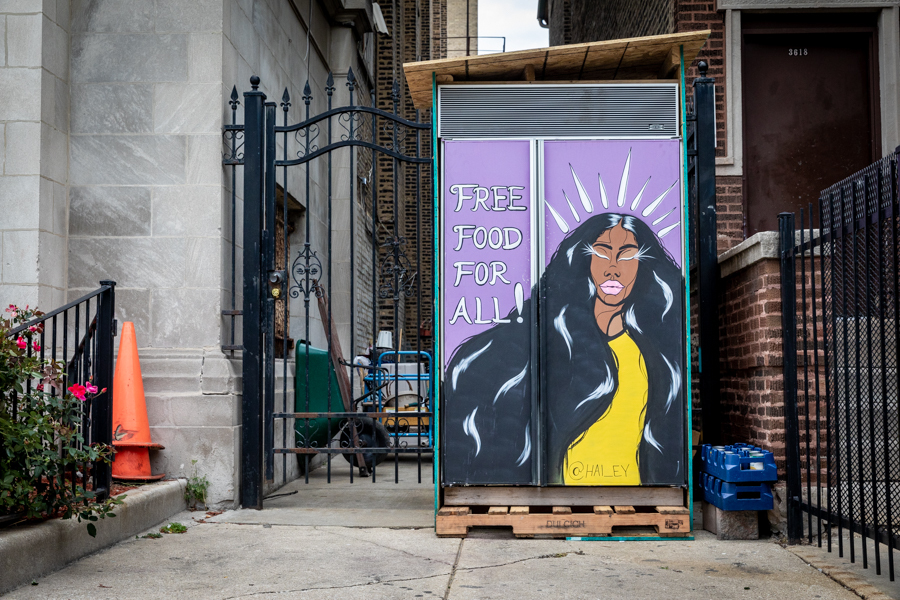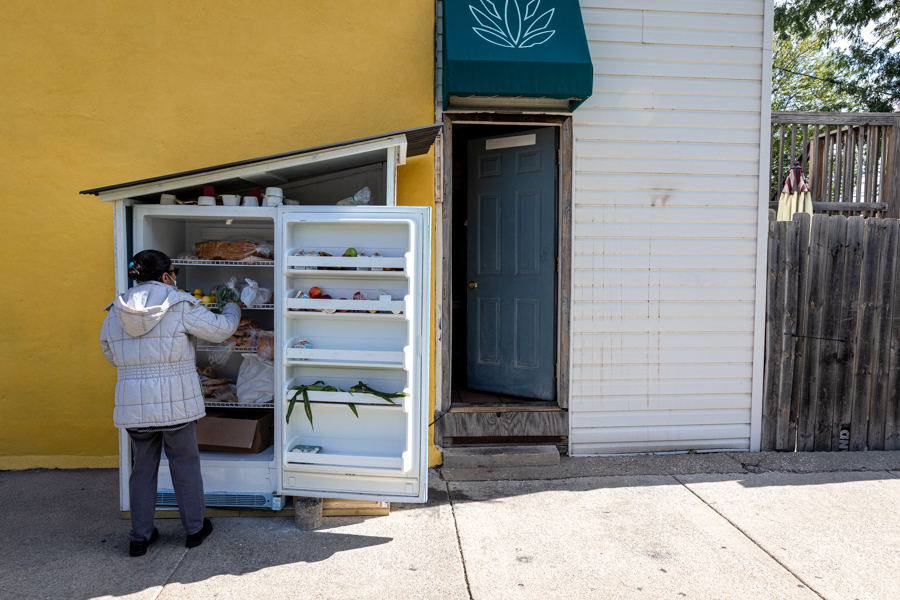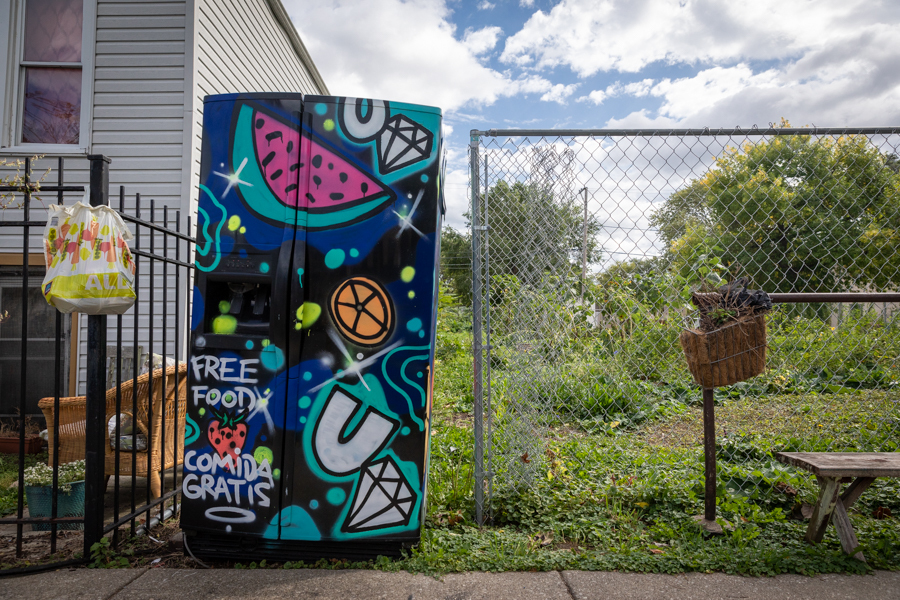Words by Makala Bach, Slow Food Youth Network USA
Photos by Christy Schmid, Love Fridge Volunteer
The Love Fridge was created to showcase the power of taking responsibility for the hunger of your neighbor. It circumvents profit and politics to do what refrigerators do best—feed people.

One is hidden in the alley behind a used bookstore. Another is tucked in the corner of a Mexican-Korean fusion restaurant. A third is proudly displayed along the sidewalk near a local art gallery. Most are on the South Side of Chicago, some on the West Side, and a few are scattered throughout the middle. They are painted by local artists living in the same neighborhoods. All are vibrant and brightly colored — turquoise, red, orange, or light blue. Some are clean, some dirty. Some are emptied and filled multiple times each day, and some are mostly emptied. A few are accompanied by pantries brimming with dry beans and canned soups. Many say “Comida Gratis” or “Free Food” while others say “The Love Fridge.” A few say both. There are 24 of these refrigerators scattered throughout the city of Chicago, and all have been given a second chance to serve a bigger purpose.
Musician Ramon “Radius” Norwood was living in Brooklyn, NY last spring when he stumbled upon his first brightly-painted, out-of-place refrigerator. This one happened to be a part of a community initiative called “The Friendly Fridge” that was gaining momentum in Brooklyn, encouraging people to “Take what you need, and leave what you don’t.” Having grown up in various food apartheids in the South Side of Chicago, Ramon knew he had to channel the power of this community-fridge movement back home. So he did. In a 5-week visit back to Chicago last summer, Ramon had three refrigerators up-and-running before returning to Brooklyn.

Inspiration hit Ramon when his community needed it most. A report conducted by Northwestern University last spring, predicted that the rate of food insecurity in the United States would reach its lowest point, at 10.1%, in March of 2020. In April, the food insecurity rate in the Chicago Metropolitan Area had jumped to 24%. Just one month after the impact of COVID-19 became a shocking reality in the United States, rates of food insecurity were skyrocketing nationally — doubling overall, and tripling among households with children. According to Feeding America, food banks across the country are feeding 55% more people now than before the pandemic. Out of people visiting food pantries this year, 4 in 10 people were there for the first time.
The Love Fridge was created to showcase the power of taking responsibility for the hunger of your neighbor. It circumvents profit and politics to do what refrigerators do best — feed people. The food in these brightly colored refrigerators is available to anyone at any time. Neighbors visiting a Love Fridge are encouraged to “take what they need,” and the food inside the refrigerators is supplied by individuals and businesses who have the capacity to “leave what they can.” Large-scale food donations are supplied by government organizations like the USDA, nonprofits like the Greater Chicago Food Depository, and in some cases corporations like Imperfect Foods or Gotham Greens. Local food businesses like the female, Jewish and LGBTQ+-owned fried chicken restaurant The Split Rail Chicago or food and beverage incubator The Hatchery donate up to 75 meals each week. Volunteers with cars distribute donated food to all sides of Chicago, sometimes transporting up to 400 pounds of food from one side of the city to the other in the backs of their cars. Those with time help with fridge management — organizing, cleaning, and throwing out old or expired food items in the refrigerators in their neighborhoods. Sometimes it’s neighbors helping to spread the love, sometimes its people from the opposite side of the city. Whether hosting, donating, painting, stocking, cleaning, distributing, repairing, or eating from a Love Fridge, all involved are taking part in a circular system of spreading the love.
This summer, those involved with the Love Fridge hope to expand the network. They recently partnered with the Chicago Period Project to donate feminine hygiene products at fridge sites and will be partnering with South Loop Farmers Market to expand their love to local farmers. They hope to increase the likelihood that someone will stumble on a brightly painted, out-of-place refrigerator of their own to love, and have plans to continue setting up more throughout the city. Powered by electricity, love, and the belief that being able to feed yourself is a right, not a privilege, the Love Fridge has showcased the radical impact individuals can have on the food system when called to spread a little love of their own.

If you’re interested in supporting the Love Fridge with food, time, or money, connect with them on their website https://www.thelovefridge.com/ or on Instagram, Twitter, and Facebook.

